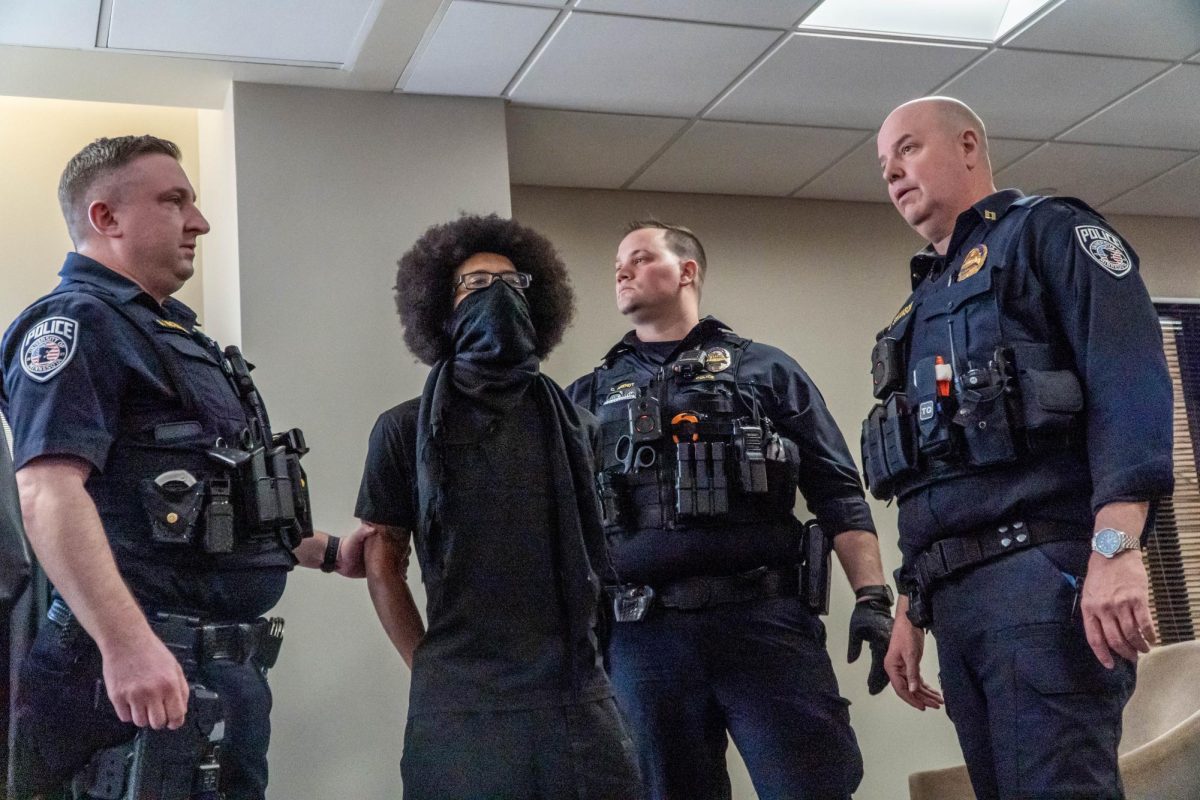The Board of Regents held a special meeting on Feb. 26 to appoint the 18th president of the University of Minnesota.
During the meeting, the regents conducted a public interview with each of the three finalists before naming the next president later in the afternoon.
The candidates, Laura Bloomberg, Rebecca Cunningham and James Holloway, were all publicly interviewed on each of the University campuses from Feb. 12 to Feb. 21.
At the Monday meeting, each candidate was asked 11 total questions. Nine of those questions were asked to all three candidates, and the other two were tailored to each individual candidate.
Interim President Jeff Ettinger will remain in his current position until the end of June. The chosen candidate will fully assume the role of president on July 1.
Interview One: Laura Bloomberg
Regent Penny Wheeler asked the first question of the meeting: “What do you want us to know about you that should get us especially excited about you serving as our next president?”
Laura Bloomberg said although she’d spent years working at the University, she was aware that just her love of the place and love of the institution wasn’t a good enough answer.
Bloomberg said her experiences as a K-12 principal, Dean of the Humphrey School of Public Affairs and her current position as the President of Cleveland State University (CSU) has taught her how to think when overseeing a system campus.
“From the very beginning, a leader needs to understand there are very few things of consequence or import that a leader does alone,” Bloomberg said. “In many ways, leadership is a team sport.”
Regent Mike Kenyanya asked Bloomberg for her definition of student success, and how she promoted it in her current role.
Bloomberg said to promote student success, an institution needs to focus on the whole student. She said by helping students grow as people, as well as academically, they can graduate as fully-developed students and continue on a journey of lifelong learning.
CSU recently created a division of Student Belonging and Success, according to Bloomberg. This division was built around the students and provided mental health outreach opportunities for individuals on top of standard academic assistance.
“When you belong, we believe you bring your full self,” Bloomberg said. “Not your perfect self, but your full self.”
The first of two individualized questions was asked to Bloomberg by Regent Bo Thao-Urabe. She asked Bloomberg how she collaborated with a team to set and reach a goal.
Bloomberg told a story about how she hosted a 14-person team at her house for lunch to work toward some of CSU’s strategic goals, like correcting declining enrollment and working through a budget deficit.
Bloomberg said she had team members put their name next to action items they knew they would have to take the lead on, and again for people they would want to collaborate with. She said it would hold them accountable in completing as many goals as possible.
“It was a really important exercise in making sure every member of the team had a voice and a say,” Bloomberg said. “But it was also very intentionally sharing accountability for getting done the things we said we’re gonna get done.”
Interview Two: Rebecca Cunningham
One of the largest and most immediate things the new president will need to take action on is developing a new systemwide strategic plan past MPact 2025, said Regent Doug Huebsch.
Rebecca Cunningham said the University of Michigan (U-M) has been working on developing a strategic plan that would culminate in 2034, and she’d want to see something similar for the University’s next one.
Cunningham said her experience with working at U-M, another school with multiple campuses like the University, helped her realize a university is greater than the sum of its parts. She said she would want the next strategic plan to have all five campuses working together toward a common goal.
“We’re not just advancing individual pet projects here and there,” Cunningham said. “We’re actually transforming a vision that’s collective and bigger than the sum of our parts.”
Regent Ruth Johnson asked how Cunningham’s experience and background in healthcare would prepare her to lead the University’s medical system.
Cunningham, who has 25 years of healthcare experience in her various faculty roles at U-M, said her training both on the ground and in administration work would help her educate the people in those roles at the University.
“I want to be clear: you’re not hiring me to run either the medical system or the health system,” Cunningham said. “You have great leaders in that space.”
Cunningham said the letter of intent the University addressed to Fairview is a great opportunity for the University to continue to strengthen its healthcare system for at least the next decade. She said she’d be able to step in right away and help support the University during such a pivotal year for their healthcare programs.
The final question was posed by regent Kodi Verhalen, who asked Cunningham how she encourages and challenges team members to set ambitious goals for themselves.
Cunningham said that like in her vision for a strategic plan, she encourages people to think bigger than themselves, and how the goals they set will also impact the system as a whole.
During the process of creating U-M’s 2034 strategic plan, Cunningham said her team had only three months to conduct a full analysis of the system’s research portfolio. She said she inspired the tiny team to get what felt like a vast amount of work done in such a short time by reminding them of the value their work had to the university as a whole.
“Whatever the initiative is, we’re working toward rallying everybody around why we’re doing it,” Cunningham said. “No one likes to work without a ‘why.’”
Interview Three: James Holloway
Regent Tadd Johnson asked for examples of how James Holloway, the provost and executive vice president of the University of New Mexico (UNM), would lead tribal relations and foster a sense of community in a diverse state like Minnesota.
Holloway said New Mexico is also incredibly diverse, with 23 federally-recognized Indigenous tribes and a large Vietnamese and African American population. He said UNM tries to mirror the population in its students and faculty and he would want to keep up that practice at the University.
When UNM’s budget was reduced in the middle of 2020 during the COVID-19 pandemic, Holloway said one of his main focuses was to divert funding to keep ethnic student centers open because of their impact on the UNM campus.
“When we think about working across diversity, it has to hit every aspect of our mission,” Holloway said.
Regent Mary Turner gave Holloway a multi-part question, asking him how he would build relationships with key University stakeholders like students, faculty, staff, elected leaders, donors and local government officials.
Holloway said when working with any stakeholder group, understanding their needs and interests is the best way to build a strong relationship. He said he meets regularly with UNM student groups and answers their questions so he can learn more about what they want from him.
Holloway said he also stays in constant communication with faculty groups on campus. He said even though he is only required to update them on important campus information once a year, he does it monthly just so they’re aware of the goings-on around campus.
Elected leaders and their staff often provide solutions to problems facing a university, Holloway said. He said issues plaguing UNM, like low faculty compensation, were solved through the help of the state legislature.
“It’s not really their job to solve the problems of the university, but it is their job and their interest to solve the problems of the state,” Holloway said.
One of Holloway’s personalized questions came again from regent Verhalen, who asked how he established structure in a team setting. Holloway said he’d done it four times: once in establishing a research center, once as an associate dean, once as a vice provost and again in his current role as provost.
One of the key things Holloway said helped him was finding a “local guide,” who knows the area or the topic and can help a team leader through it. He said it helps hold the team accountable and let them know if they’re doing something wrong.
“Cohesion is partially professional, but it’s also partially social,” Holloway said.
This piece was last updated at 2:45 p.m.




















